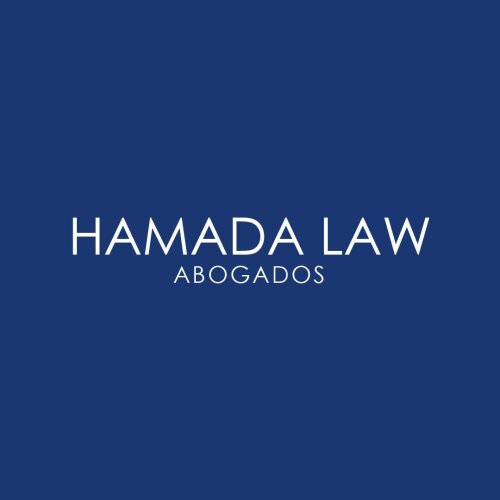Best Art & Cultural Property Law Lawyers in Lima
Share your needs with us, get contacted by law firms.
Free. Takes 2 min.
List of the best lawyers in Lima, Peru
About Art & Cultural Property Law in Lima, Peru
Art & Cultural Property Law in Lima, Peru, encompasses the regulations and legal frameworks designed to protect and manage art and cultural properties. Peru's rich cultural heritage, with its wealth of archaeological sites and traditional artworks, necessitates robust legal protections. This area of law addresses the ownership, conservation, and repatriation of cultural assets, ensuring that these treasures are preserved for future generations. The legislation often intersects with international treaties and conventions aimed at preventing the illicit trade of cultural goods and ensuring their proper management and restoration.
Why You May Need a Lawyer
Individuals and institutions may require legal assistance in Art & Cultural Property Law in various scenarios, including:
- Acquisition or sale of art pieces or cultural artifacts.
- Inheritance disputes involving items of cultural significance.
- Negotiation with museums or galleries regarding exhibitions or loans.
- Restoration projects that require compliance with legal standards.
- Issues relating to the unauthorized reproduction or use of art.
- Repatriation claims involving illegally exported cultural items.
- Advice on compliance with national and international laws and conventions.
Local Laws Overview
Lima, as Peru's capital, is subject to national laws governing art and cultural property. Key elements include:
- Law No. 28296 - General Law of Cultural Heritage: This law identifies what constitutes cultural heritage and outlines protective measures.
- Penal Code: Includes provisions for offenses related to the destruction, theft, or illegal trafficking of cultural property.
- International Treaties: Peru is a signatory to conventions such as UNESCO's 1970 Convention on the Means of Prohibiting the Illicit Import, Export, and Transfer of Ownership of Cultural Property.
- Registro Nacional de Bienes Culturales: A national register for cultural goods ensuring their proper documentation and security.
Frequently Asked Questions
What qualifies as cultural property in Peru?
Cultural property can include historical artifacts, artworks, manuscripts, and monuments considered significant to Peru’s national heritage.
How can I verify the authenticity of a cultural artifact?
Consulting experts and utilizing the Registro Nacional de Bienes Culturales can help authenticate cultural artifacts.
Is it legal to export art from Peru?
Exporting art is highly regulated, requiring compliance with domestic laws and often needing special permits, especially for cultural heritage items.
What are the consequences of illegally trading cultural artifacts?
Penalties include fines and imprisonment, with severe consequences for entities involved in illicit art and artifact trade.
How can I prove ownership of an art piece?
Maintaining documentation such as purchase receipts, certificates of authenticity, and registration with national bodies is crucial for proving ownership.
Can items declared as cultural heritage be sold privately?
Cultural heritage items are often subject to restrictions, requiring government authorization for any form of sale or transfer.
What should I do if I find an artifact?
Report it to the local authorities or the Ministry of Culture to ensure it is properly assessed and handled according to law.
How do I handle a claim for repatriation?
Consult a lawyer specializing in art and cultural property law to navigate international treaties and domestic legal channels for repatriation.
Are there any tax benefits for donating art?
Yes, donating art to recognized institutions may offer certain tax benefits, subject to compliance with relevant regulations.
Who is responsible for cultural heritage preservation in Peru?
The Ministry of Culture is the primary body overseeing the preservation, documentation, and promotion of Peru’s cultural heritage.
Additional Resources
For further information and assistance, the following resources can be helpful:
- Ministry of Culture: The main governmental body responsible for cultural heritage protection.
- Instituto Nacional de Cultura (INC): Offers guidance on the conservation and management of cultural properties.
- Municipality of Lima Cultural Division: Local authority providing support on cultural matters within Lima.
- Legal Aid Societies: Offer services and resources for those seeking legal guidance.
Next Steps
If you require legal assistance in Art & Cultural Property Law, consider the following steps:
- Identify and document your specific legal issue related to art or cultural property.
- Gather all relevant documents and evidence to support your case.
- Research and contact a lawyer specialized in Art & Cultural Property Law. It may be beneficial to seek recommendations or consult legal directories.
- Prepare for your consultation by organizing questions and clarifying your objectives.
- Follow your lawyer’s advice and actively participate in resolving your legal matter.
Whether dealing with acquisition, compliance, or disputes, seeking professional guidance ensures that your interests and Peru’s cultural heritage are protected.
Lawzana helps you find the best lawyers and law firms in Lima through a curated and pre-screened list of qualified legal professionals. Our platform offers rankings and detailed profiles of attorneys and law firms, allowing you to compare based on practice areas, including Art & Cultural Property Law, experience, and client feedback.
Each profile includes a description of the firm's areas of practice, client reviews, team members and partners, year of establishment, spoken languages, office locations, contact information, social media presence, and any published articles or resources. Most firms on our platform speak English and are experienced in both local and international legal matters.
Get a quote from top-rated law firms in Lima, Peru — quickly, securely, and without unnecessary hassle.
Disclaimer:
The information provided on this page is for general informational purposes only and does not constitute legal advice. While we strive to ensure the accuracy and relevance of the content, legal information may change over time, and interpretations of the law can vary. You should always consult with a qualified legal professional for advice specific to your situation.
We disclaim all liability for actions taken or not taken based on the content of this page. If you believe any information is incorrect or outdated, please contact us, and we will review and update it where appropriate.











